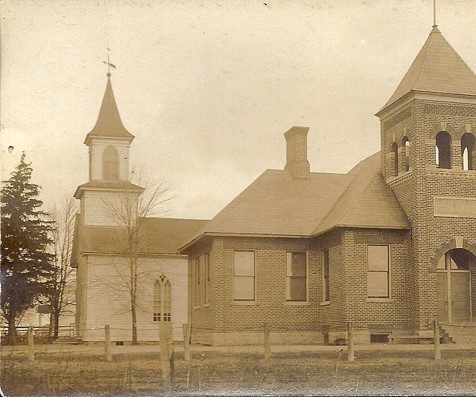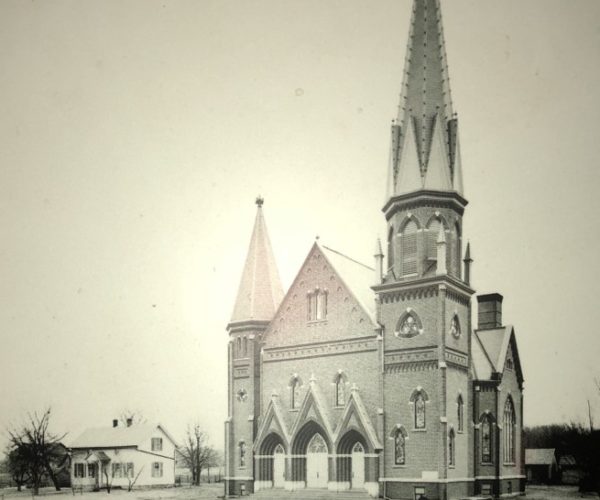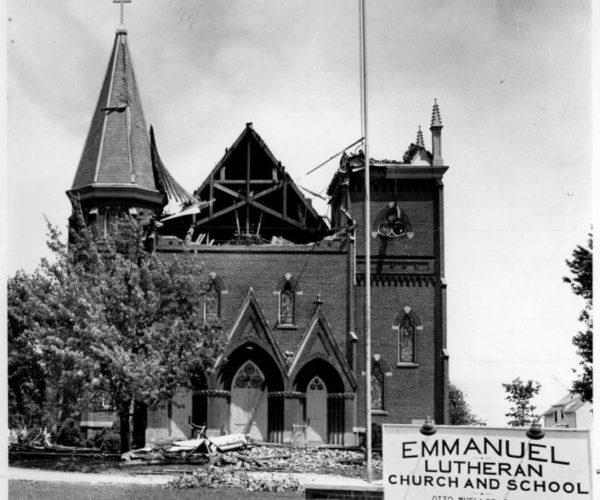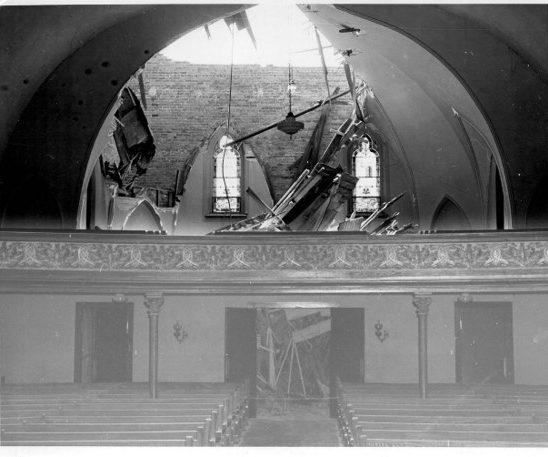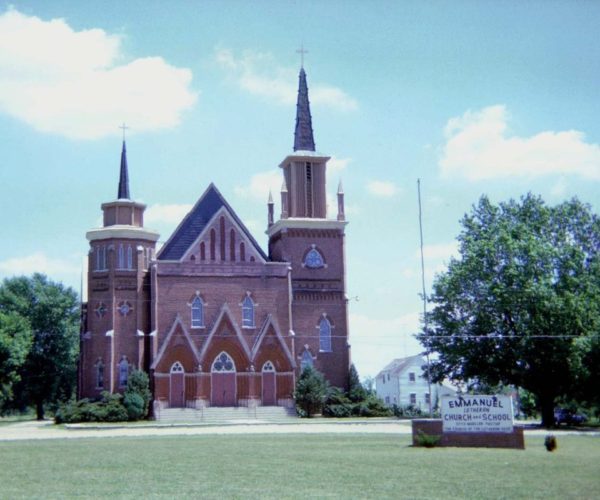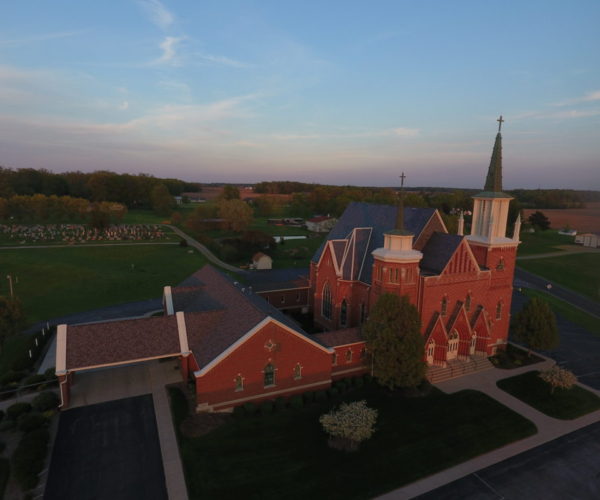Scattered groups of German immigrants began arriving in southeast Allen County in the late 1830s. Most of these immigrants were either Lutheran or Roman Catholic, with some scattered followers of the Reformed faith as well. These early settlers had to rely on the sporadic visits by travelling missionaries to receive any religious services. One of these early missionaries was the Reverend Friedrich Conrad Dietrich Wyneken, who, besides serving at both St. Paul’s Lutheran Church in Fort Wayne and Zion Friedheim Lutheran Church in Adams County, made several missionary journeys around northeast Indiana, northwest Ohio, and southern Michigan.
In 1841, Wyneken travelled back to Germany in order to recruit Lutheran missionaries for America. While he was there, a Pastor Georg Jensen served as the interim pastor at St. Paul’s, Fort Wayne. It was during this time that a Lutheran congregation was first organized in southeast Allen County. Religious services continued to be held sporadically in “The German Evangelical Lutheran Congregation of Marion Township” until, in the summer of 1845, the congregation issued a call to Friedrich Wilhelm Husmann, at that time a Lutheran school teacher in Fort Wayne. Shortly after this, two more fledgling congregations – the future St. John, Bingen, and St. Peter, Fuelling – issued him a call. Then, on December 25, 1845, St. Paul’s German Evangelical Lutheran Congregation of Marion Township, Allen County, Indiana was founded (only later was the name changed to Emmanuel).
Now, the members of St. Paul’s, Soest, came from a wide variety of backgrounds from different parts of Germany and America. They also came from a wide variety of different religious backgrounds as well – some grew up as members of strictly Lutheran churches, some as members of rather lax and theologically aberrant Lutheran churches, and some even came from a Reformed background. As a result of these differences, it became increasingly difficult to maintain unity within the congregation. Finally, after several years of internal bickering, the congregation split into two, with the more confessional, traditional Lutherans remaining as members of St. Paul’s, and the rest founding a new congregation, which they named St. John’s.
For the next fifteen years, these two congregations existed side-by-side, a mere half mile down the road from each other. In fact, from 1860 on, it would have been possible to watch the members of St. John’s enter and leave their church from the steps of St. Paul’s, and vice versa. Finally, in 1870, after seventeen years of separation, the two churches re-merged into one congregation, calling themselves Emmanuel. Some of the former members of St. John’s were unhappy with this merger, however, and by 1871 had already refounded their church. St. John’s finally closed their doors for good in 1907 when the remaining members joined Grace Lutheran Church in Fort Wayne (which has itself since closed). The old cemetery of St. John’s is still in existence, directly across the highway from Emmanuel.
Over the next forty years, Emmanuel continued to grow and prosper, until, in 1908, the decision was made to finally build a new church building, the 1860 building having become far too small for the congregation’s needs. The new church that they built was the largest church building in Allen County outside of Fort Wayne, and it was considered by many to be the most beautiful church outside of the city. This building is the one which we still worship in today, over 100 years later. It remains largely the same as it was when it was built, with the exception of the steeples and facade, which were badly damaged in a wind storm in 1957, when the largest steeple was blown over, crushing the roof over the balcony and part of the facade. The steeples and roof were rebuilt, but at a much lower height. Additionally, in 1993, a Christian Growth Center was added to the north side of the church. During WWI and WWII, the use of German in the church’s worship services and in the parochial school became very controversial. Additional English services were added and the school stopped teaching most subjects in German. By 1958, due to the declining attendance, the German service was dropped, the last German service being held on December 28, 1958.
Today, Emmanuel remains dedicated to the preaching of God’s Word, the administration of the Sacraments (Baptism, Confession and Absolution, and Holy Communion), and the pure teachings of the Lutheran Church. We are a congregation of over 600 members, with a thriving daycare, parochial school, youth groups, and various other social groups within the parish. We invite you to come worship with us.
